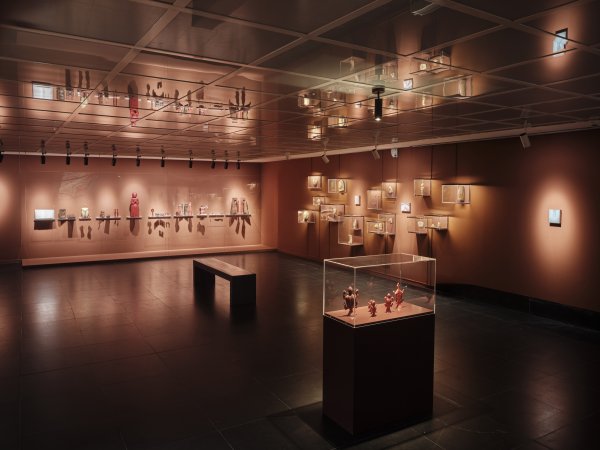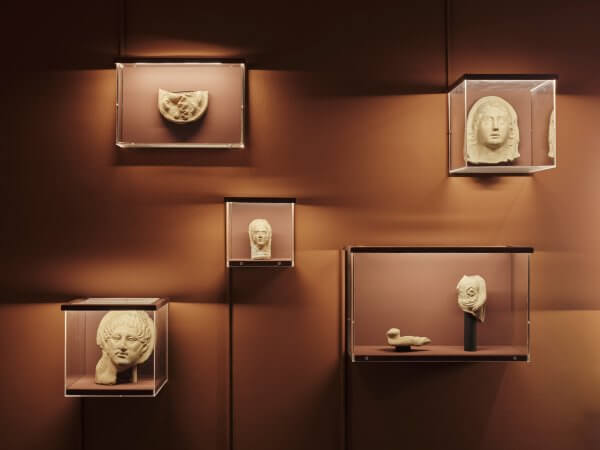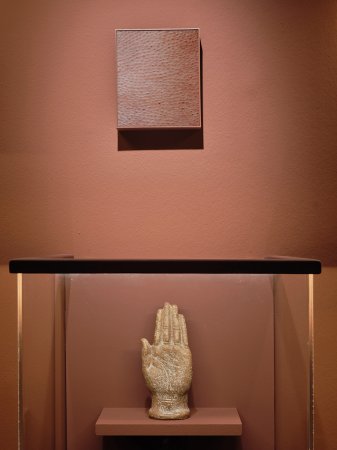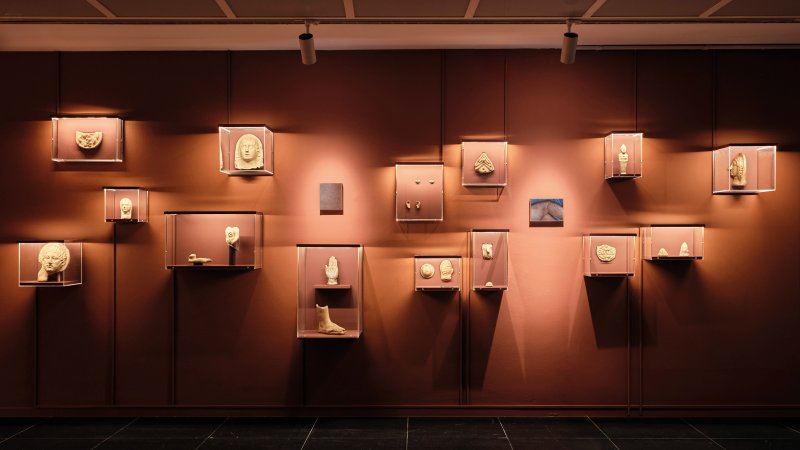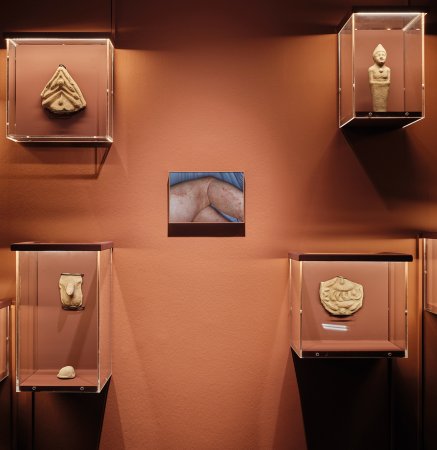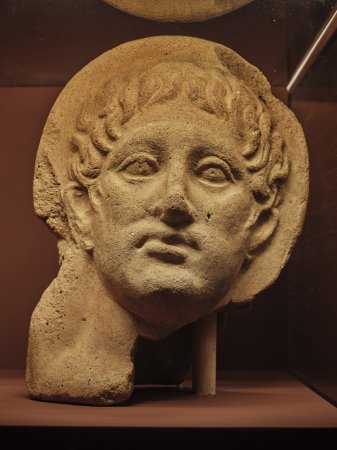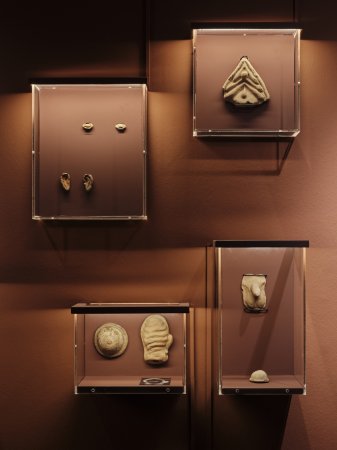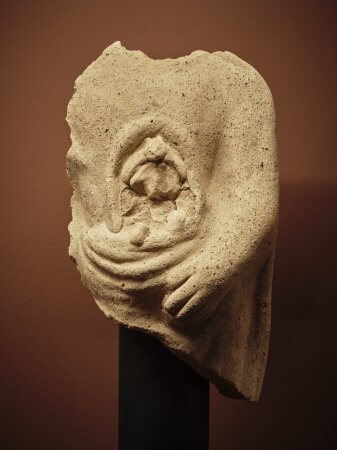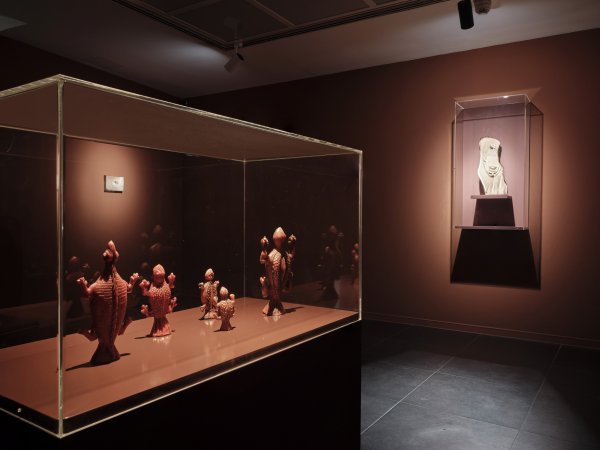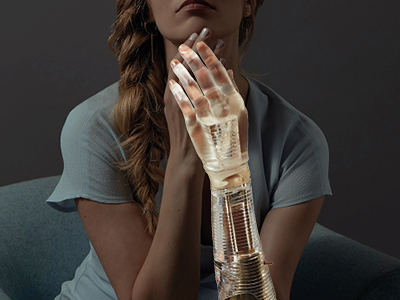Anatomical votives from the Collection of Antiquities of Justus Liebig University Giessen
23 Anatomical votives presented in the following order: Votive head; fragment of a viscera plate; votive head, fragment of a hand with offering (pastry); fragment of a votive figure of a man in a cloak with opened abdominal cavity; votive head; outstretched left hand; foot; votive eyes; votive ears; female breast; votive of a uterus; viscera plate; male genital; human bladder; viscera plate; votive figure of a swaddled infant; human heart; votive heart; halved votive head (left side of the face); female torso with opened abdominal cavity.
3rd–2nd c.
Terracotta
Dimensions variable
Courtesy of the Collection of Antiquities, Justus Liebig University Giessen
A foot, a hand, an ear—shaped from clay and entrusted to a deity more than two thousand years ago. These small, silent objects tell the stories of people who transformed their vulnerability into images. They speak of illness and of hope, of the desire for healing and of gratitude when recovery comes.
Thanks to a loan from the Collection of Antiquities of the Chair of Classical Archaeology at Justus Liebig University Giessen, the exhibition Anatomy of Fragility presents twenty-three Etruscan terracotta votives. They come from the collection of the anatomist Ludwig Stieda, who acquired them in 1899 in what is now Isola Farnese, built over the ruins of the ancient city of Veii, and who donated them in 1913 to the university’s Collection of Antiquities. Veii was an important city of Etruscan high culture, located some fifteen kilometres northwest of Rome, and was conquered by the Romans in 396 BC.
The body-part votives of the Giessen Collection of Antiquities come from the sanctuary and repository of the Pendici di Piazza d’Armi and date mainly from the late 3rd to the mid-2nd century BC. They are among the earliest surviving testimonies of a religious practice that continued across cultures for millennia.
Since this custom was so widespread, sanctuaries quickly filled up. So to make room for new offerings, repositories in the form of pits were created at the sanctuaries, in which the votives were collected.
The anatomical votives include heads, hands, feet, sexual organs and internal organs. Most of the votives were made of fired clay, a readily available and inexpensive material that was easy to work with. With the help of negative moulds, these smaller votives could be produced in series.
More elaborate were the torsos with open body cavities, some of which were individually finished by hand. By contrast, the flat viscera plates were a simplified and less costly version of the same motif.
In the exhibition Anatomy of Fragility, the Etruscan votives enter into a spatial dialogue with objects from Hans and Benedikt Hipp’s collection from Pfaffenhofen in Bavaria, whose holdings of votive offerings and associated wooden models range from the Baroque period to the post-war era.
Despite the surprisingly consistent visual representation of body parts, the uterus is an exception: in the Bavarian votives of the Hipp Collection it appears in the form of a toad, a symbolic shape that goes back to ancient ideas. The Etruscan uterus votives, by contrast, follow the actual anatomical form of the female organ. However, with one striking peculiarity: X-ray examinations of an Etruscan uterus revealed the presence of a body inside, invisible from the outside, which with high probability represents an embryo.
Hands, feet, eyes, ears and internal organs can be recognised in both collections in simplified, clear forms. The depictions of internal organs, typical for the Etruscans, were often derived from anatomical knowledge gained through the dissection of slaughtered animals. Yet the sometimes astonishing accuracy of the Etruscan votives raises the question of whether this knowledge was based solely on animal observation, or also on experiences with human bodies, for example those killed on the battlefield, or even on early operations or dissections.

